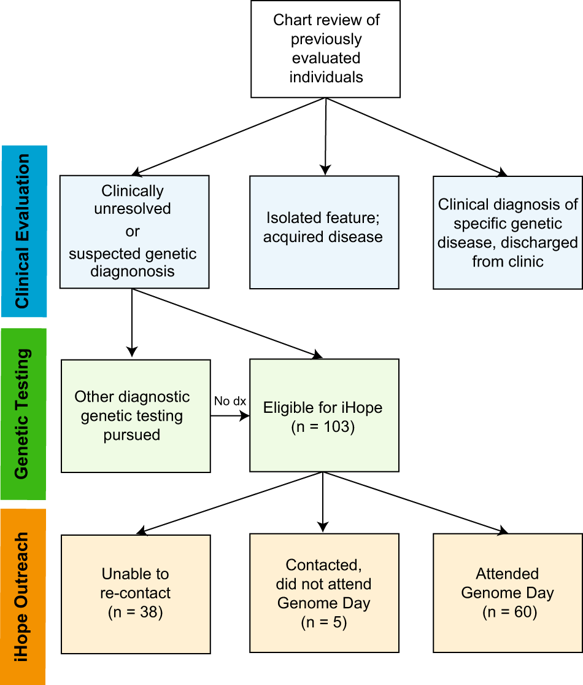npj Genomic Medicine ( IF 4.7 ) Pub Date : 2019-02-14 , DOI: 10.1038/s41525-018-0076-1 Alicia Scocchia , , Kristen M. Wigby , Diane Masser-Frye , Miguel Del Campo , Carolina I. Galarreta , Erin Thorpe , Julia McEachern , Keisha Robinson , Andrew Gross , Subramanian S. Ajay , Vani Rajan , Denise L. Perry , John W. Belmont , David R. Bentley , Marilyn C. Jones , Ryan J. Taft

|
Patients with rare, undiagnosed, or genetic disease (RUGD) often undergo years of serial testing, commonly referred to as the “diagnostic odyssey”. Patients in resource-limited areas face even greater challenges—a definitive diagnosis may never be reached due to difficulties in gaining access to clinicians, appropriate specialists, and diagnostic testing. Here, we report on a collaboration of the Illumina iHope Program with the Foundation for the Children of the Californias and Hospital Infantil de Las Californias, to enable deployment of clinical whole genome sequencing (cWGS) as first-tier test in a resource-limited dysmorphology clinic in northern Mexico. A total of 60 probands who were followed for a suspected genetic diagnosis and clinically unresolved after expert examination were tested with cWGS, and the ordering clinicians completed a semi-structured survey to investigate change in clinical management resulting from cWGS findings. Clinically significant genomic findings were identified in 68.3% (n = 41) of probands. No recurrent molecular diagnoses were observed. Copy number variants or gross chromosomal abnormalities accounted for 48.8% (n = 20) of the diagnosed cases, including a mosaic trisomy and suspected derivative chromosomes. A qualitative assessment of clinical management revealed 48.8% (n = 20) of those diagnosed had a change in clinical course based on their cWGS results, despite resource limitations. These data suggest that a cWGS first-tier testing approach can benefit patients with suspected genetic disorders.
中文翻译:

在墨西哥资源有限的畸形学诊所进行临床全基因组测序作为第一阶段的测试
患有罕见,未诊断或遗传病(RUGD)的患者通常需要进行数年的系列检测,通常被称为“诊断性征兆”。资源有限地区的患者面临更大的挑战-由于难以获得临床医生,合适的专家和诊断测试的机会,可能永远无法做出明确的诊断。在这里,我们报告了Illumina iHope计划与加利福尼亚州儿童基金会和加利福尼亚州婴儿医院基金会的合作,以实现临床全基因组测序(cWGS)在资源有限的畸形学中作为第一级测试的部署墨西哥北部的诊所。使用cWGS对60位先证者进行了可疑的遗传学诊断,但经过专家检查后临床上仍未解决,因此对他们进行了cWGS测试,以及订购的临床医生完成了一项半结构化调查,以调查cWGS结果导致的临床管理变化。在临床上发现的重要基因组发现率为68.3%(n = 41)的先证者。没有观察到复发的分子诊断。拷贝数变异或总染色体异常占 诊断病例的48.8%(n = 20),包括镶嵌三体性和疑似衍生染色体。对临床管理的定性评估显示 ,尽管资源有限,但根据其cWGS结果,有48.8%(n = 20)的被诊断者临床病程发生了变化。这些数据表明,cWGS一级测试方法可以使怀疑患有遗传病的患者受益。











































 京公网安备 11010802027423号
京公网安备 11010802027423号